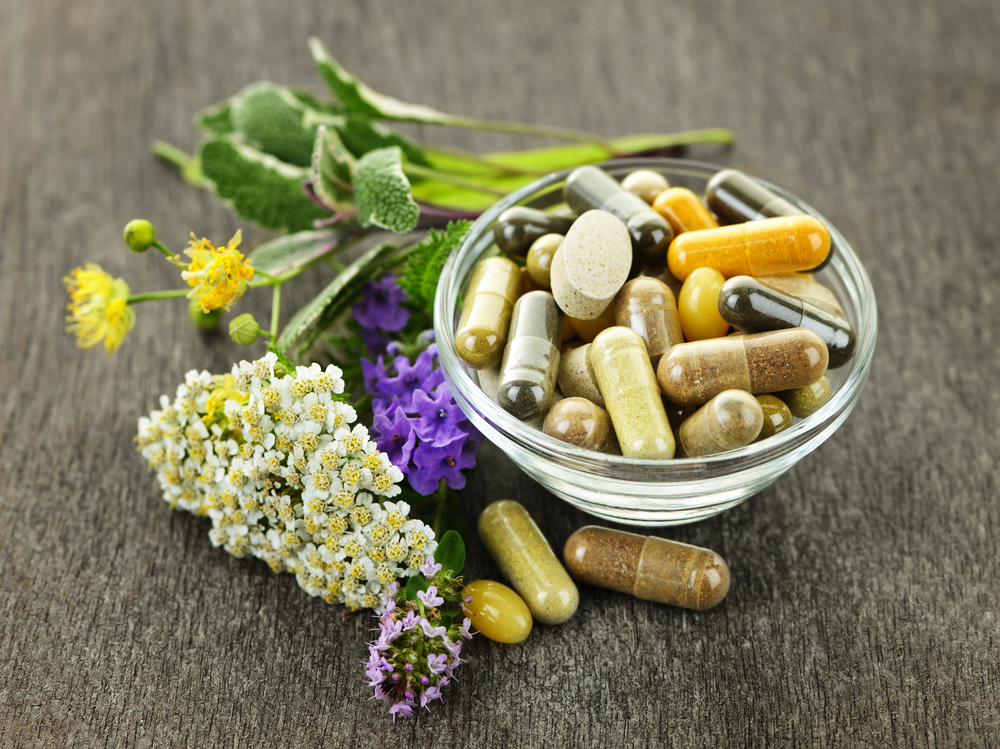You’ve probably heard about essential oils. Essential oils have been used as an alternative medicine for years. Homeopathy is a medical system based on the belief that the body can cure itself. Those who practice it use tiny amounts of natural substances, like plants and minerals.
If you’re wondering if essential oils can help control your blood sugar levels if you have diabetes, the answer is that there’s no concrete evidence that they can. More human studies and research is needed to prove essential oils can help regulate blood sugar.
However, essential oils and aromatherapy have been shown to help diabetics and others with wound healing and dealing with some of the complications that come from having diabetes.
Several essential oils could help you as part of your diabetes treatment plan.
Essential Oils
Essential oils are extracts from potentially beneficial plants. This essential oil is much more concentrated in terms of both scent and active ingredients than the original plant.
Essential oils have been used for thousands of years. Homeopathic remedies have been used for thousands of years compared to traditional Western medicine. Some people choose to use essential oil for aromatherapy over synthetic and artificial scents.
The essential oil is most commonly made using either steam or water distillation, or through cold pressing. Water or steam is passed through the plants to extract the beneficial compounds.
Cold-pressing uses force to extract compounds out of the plant rather than using heat. Some manufacturers will make diluted essential oils using a carrier oil. Diluted essential oils are not the same as pure essential oils, but they may be better tolerated when applied to the skin.
Essential Oils may help:
- Boost Mood
- Increase Focus
- Reduce Stress
- Improve Sleep
- Kill Bacteria, Funguses and Viruses
- Reduce Pain
- Reduce Inflammation
- Reduce Nausea
Best Essential Oils for Diabetics
1. Coriander Seed
Coriander essential oil might be able to help keep blood sugar levels healthy. A study found that rats with diabetes that were given coriander had lower blood sugar levels. Coriander helped improve insulin secretion in diabetic rats.
If you have type 2 diabetes, your pancreas may not secrete enough insulin. There is currently no research on the effects of coriander on diabetes in humans. However, these results suggest that coriander could be promising for people with type 2 diabetes, as it helped to increase insulin secretion.
2. Cinnamon
Cinnamon is an herb that is known to possibly help improve blood sugar levels. Cinnamon oil may help improve blood sugar levels in people with diabetes and promote insulin secretion from the pancreas.
Cinnamon oil was found to improve cholesterol, triglyceride, and certain kidney function indicators. promising for their potential benefits. These results are also raising the possibility that cholesterol-lowering drugs may help people with type 2 diabetes.
Cinnamon is a popular spice in desserts and other aromatic dishes. The flavor of this seems to make things taste sweeter without adding more sugar.
Additionally, research has indicated that it may be beneficial for people who have diabetes. In 2010, scientists published their findings that cinnamon may have benefits for insulin sensitivity, sugar and fat levels, inflammation, blood pressure, and even body weight.
Obtaining cinnamon and using the essential oil on a regular basis may support regulating diabetes for some individuals.
3. Lavender
The most popular oil for aromatherapy is lavender oil. Lavender oil may help you feel more relaxed and reduce anxiety symptoms.
A study of a small group of humans found that a mixture of essential oils, including lavender, ylang-ylang, and bergamot, can help to lower blood pressure levels. High blood pressure is a common diagnosis among diabetes patients, so finding ways to lower it is significant.
Use of lavender essential oil may help relieve diabetes symptoms, according to research published in 2013.
The researchers found that in animal experiments, lavender essential oil helped to balance out high blood sugar levels and protect against oxidative stress – which can cause complications in people who suffer from diabetes.
4. Lemon Balm
Type 2 diabetes is associated with increased inflammation. The antioxidant flavonols in lemon balm can help to reduce oxidative stress and inflammation.
A study found that lemon balm had a positive effect on fasting blood glucose, hemoglobin A1c, triglycerides, HDL cholesterol, systolic blood pressure, and measures of inflammation (C-reactive protein).
5. Clove Bud
The American Heart Association has published a paper in Circulation Research which states that oxidative stress is a key factor in the development of diabetic complications.
The antioxidants present in clove bud help protect cells from oxidative stress. The researchers concluded from the animal study that clove bud oil might help prevent type 2 diabetes that is caused by oxidative stress.
6. Eucalyptus Oil
The eucalyptus plant has been traditionally used to help treat diabetes in various regions around the world, such as South America, Africa, and Iran. Eucalyptus oil contains anti-bacterial and anti-fungal properties that some people use to promote wound healing and fight inflammation.
Eucalyptus was found to help improve insulin secretion and reduce blood sugar levels in mice who had been induced with diabetes via the use of streptozotocin. Eucalyptus has been found to be an effective way to help treat diabetes.
7. Nigella Sativa Oil / Black Seed Oil
Nigella sativa, which is also known as black seed oil, is used as a form of medicine in many different parts of the world. Nigella sativa can help to regulate blood sugar and insulin levels.
Nigella sativa oil could help treat hyperglycemia and reduce inflammation. It does this by acting as an antioxidant.
Some small studies suggest that taking black seed extract by mouth might improve blood sugar in people with diabetes. Some studies have shown that taking black seed extract might improve blood sugar levels in people with diabetes. In 2014, scientists did a study to see if Nigella sativa seeds and their essential oil could help treat diabetes in rats.
The researchers found that Nigella sativa is rich in antioxidants. These antioxidants may help reduce the risk of complications from diabetes that result from oxidative stress.
Black seed oil, when used with a healthy diet, may help reduce blood sugar levels.
8. Black Pepper
Piperine is the active ingredient in black pepper. Piperine has been shown to have an effect on blood sugar levels in animals at certain doses.
Type 2 diabetes is caused by insulin resistance. The piperine in black pepper can help improve insulin resistance and has anti-inflammatory properties.
9. Peppermint Oil
Another study found that peppermint oil increased serum insulin levels and lowered blood glucose in diabetic rats treated with streptozotocin to induce type 2 diabetes.
10. Frankincense Oil
Frankincense oil is often used to improve the appearance and texture of the skin. It can help prevent scarring in wounds. Having diabetes may result in slower wound healing, so using Frankincense may help the wound heal.
11. Helichrysum and Grapefruit
Maintaining a healthy weight is essential for controlling type 2 diabetes symptoms. Being overweight does not cause every case of diabetes, but it can increase the risk or make symptoms worse.
Weight loss is often the first treatment for people with diabetes. Essential oils may help alongside changes in diet and exercise.
A study published in 2015 found that rats who consumed extracts of Helichrysum or grapefruit as supplements gained less weight and had fewer signs of inflammation and less excess insulin than rats who did not consume any supplements.
Future research may show that both Helichrysum and grapefruit extracts can help people lose weight if used properly.
For example, a massage after a workout with a base oil that contains Helichrysum or grapefruit essential oils may help promote relaxation and weight loss.
Using Essential Oils for Diabetes
Essential oils should be used in combination with other lifestyle habits to promote health and wellness. Although there have been many studies on the effects of essential oils on diabetes in animals, there is still lack of research on how it affects humans.
Although they have the potential to be effective, they should not be used to replace any diabetes medications you are currently taking.
Essential oils can be taken orally, used externally, or inhaled for aromatherapy or respiratory issues. If you are going to use essential oils orally, be sure that you buy a type that is meant to be used orally.
If you want to apply essential oils directly to your skin, you might need to mix them with a carrier oil first. Carrier oils are often used to dilute essential oils. Some popular carrier oils are olive oil and coconut oil. If you apply certain essential oils to your skin, it may cause burning or another skin reaction.
If you want to use essential oils to help control your diabetes, make sure to check your blood sugar levels so you can see if the oils are working.
Many people enjoy diffusing essential oils in their home. Add a few drops of essential oil to some water in a diffuser.
The best way to start using diffusing is by diffusing for 30-60 minutes at a time to see how it affects you. If you decide to use an essential oil diffuser, make sure the room is well-ventilated.
Many essential oils can be inhaled or applied to the skin. Inhaling them allows the oils to be carried into the bloodstream through the receptors in the nose and the capillaries of the lungs.
In a Diffuser
Essential oils are added to an aromatherapy diffuser in order to improve the scent of the vapor. This method can be used to relax the body and mind by taking long, deep breaths. The goal is to allow helpful compounds to enter the body. A diffuser emits small particles of oil into the air, allowing them to circulate evenly.
To create a diffuser, put a few drops of oil into a bowl of hot water.
Inhaled Directly
On a piece of cotton add a few drops of the oil to a piece of cotton or a tissue, then hold it close to your nose and breathe in.
Diluted on the Skin or in a Massage
Some particles are so small that they can pass through the skin and into the bloodstream. Others may provide localized treatment. Use essential oils only in very small amounts, and only if you are sure they are safe: You should always mix essential oils with a carrier oil, such as sweet almond oil, before using them.
The oils used in massages can help to relax the person and reduce stress levels. People can also add a few drops of essential oils to bath salts, lotions, or wound dressings.
Cautions
Always keep essential oils away from children and pets. Some essential oils are poisonous to animals, including eucalyptus oil, peppermint oil, and cinnamon oil.
Do not use photosensitive oils when you will be in sunlight. Photosensitive oils can cause severe burns on your skin. Examples of these oils include lemon, lime, grapefruit, orange, tangerine, and bergamot.
Make sure you wash your hands after you’ve used essential oils. If you touch your eye after handling essential oils, it can cause a burning sensation.
If you suffer from asthma, it is best to avoid using essential oils as they may cause irritation and trigger your symptoms. If you have difficulty breathing when using essential oils, discontinue use immediately.
Pregnant women, children, and pets are more likely to have negative reactions to diffused essential oils. If you have any of these groups in your household, be sure to consider their needs before using a diffuser.
It is very important to mix an essential oil with a carrier oil before using it on the skin, in order to dilute it. Add a few drops of essential oil to 1 ounce of a carrier oil like olive oil, coconut oil, or almond oil.
Before using a diluted essential oil mixture, it is recommended that you apply a small amount to the forearm to check for allergies. If there are no indications of allergies after 24-48 hours, it is safe to use the diluted oil.
Some essential oils, like lavender, can contain substances that may mess with your hormones if you apply them to your skin, according to the National Institute of Environmental Health Sciences. Lavender can cause prepubescent males to grow unwanted breast tissue.
Never swallow an essential oil, as many are toxic.
Outlook
While essential oils cannot cure diabetes, using them in addition to regular treatment may help some people manage the condition. Despite the lack of evidence, some people still believe that essential oils can help to treat diabetes. However, it is important to be aware that there is no proof that this is the case, and some uses of essential oils may not be safe.
If you are using these oils, do so alongside your regular treatment, and take the necessary precautions.
You should speak to a doctor before using essential oils, and you should not use them on or around children without first seeking medical advice.
Essential oils may help combat diabetes and its symptoms when used safely.
No matter what somebody’s treatment plan is, it is crucial that they find out as much as they can about the illness. This can have a positive impact on the result of the treatment and make their life better.
Conclusion
Diabetes is a constant illness that has a tendency to deteriorate with time, particularly without sufficient treatment or positive lifestyle changes.
Both nature and nurture affect the development and progression of diabetes. A healthy lifestyle is not always enough to prevent health problems. Sometimes people need medication and ongoing medical support.
You should find a doctor you like and trust to help you develop a comprehensive plan for living with diabetes.
READ MORE: Getting Rid of Scars With Essential Oils









